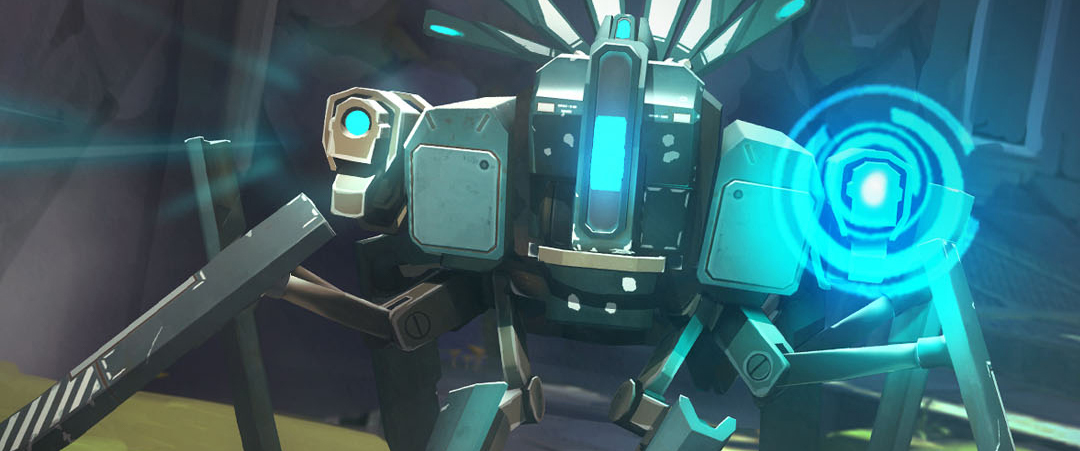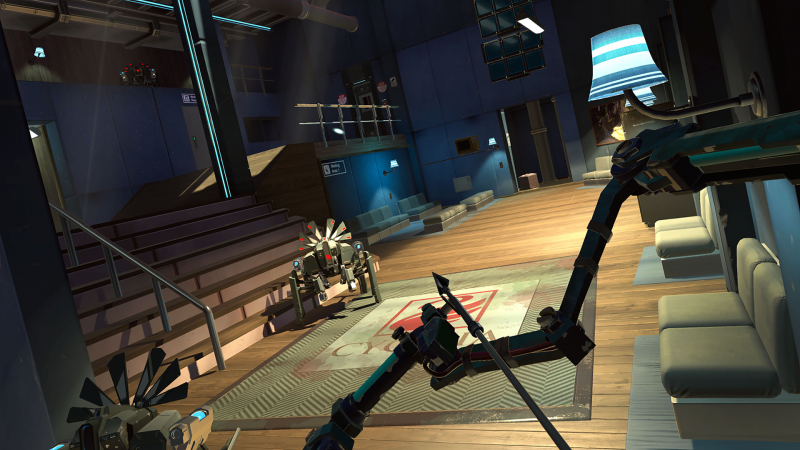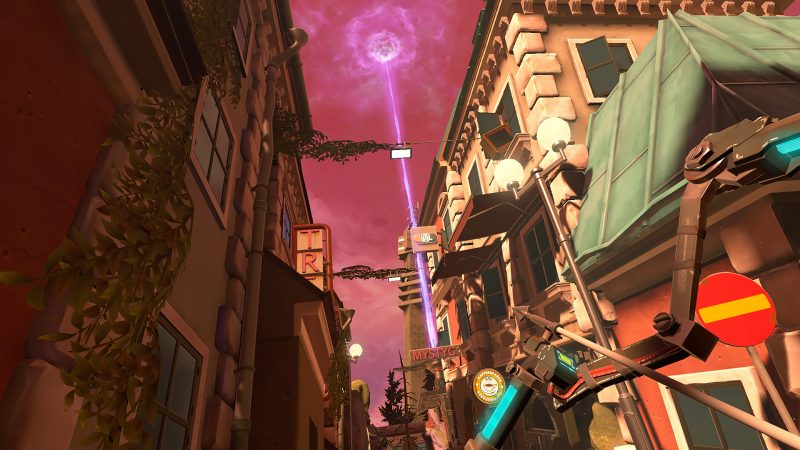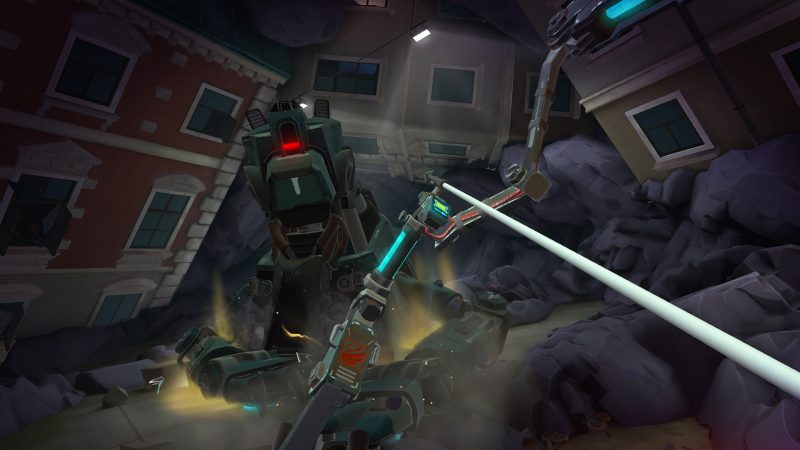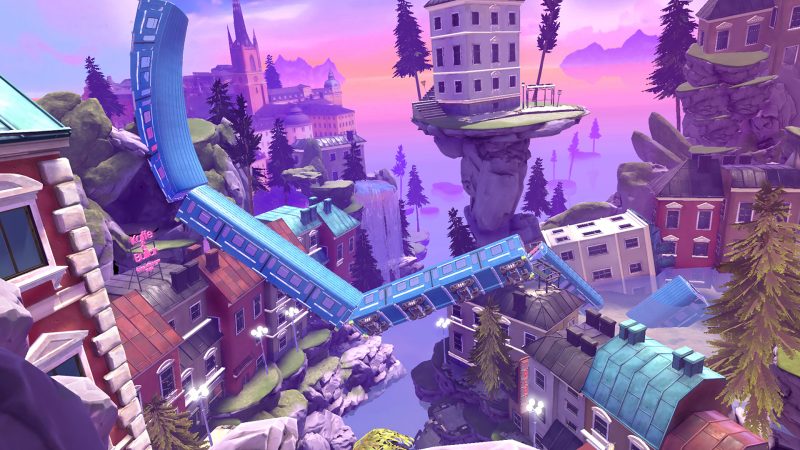Apex Construct Review (PSVR)
For the purposes of transparency, this review was created using a code provided by the company or their respective PR company. The use of a review code does not affect my judgement of the game.
Apex Contruct took the number one spot on my top five upcoming VR games of February 2018. Since it was announced it has had promise given the portfolio of the team members – who have worked on titles like Battlefield and Mirror’s Edge. But, did it live up to my expectations?
Apex Construct starts as you are informed you are the last human, who has been pulled from the void – minus one of your human hands the AI has been nice enough to replace with a robotic one. This AI is called Father, and he explains you need to save this dystopian world from another AI Mother. After spending sometime in the world, you will discover you are not the first human pulled from the void to complete this task. This is really all I can say about the story without ruining it for you.
Although the trailers may have made it look like it was going to be a game all about bow and arrow combat, there is a lot more to the gameplay. What the game actually contains did come as a surprise to me.
Yes, the main part of the game is about the bow and arrow combat, so what better place to start. I have always said when it comes to a game that concentrates and restricts itself to one method of combat, it has to do it well. In the case of Apex Construct the team have done a great job of making the bow and arrow responsive and accurate, but it does come with some issues. With the main one being the control scheme which can become fiddly in moments of combat and resulted in a number of deaths in my play-through for this review.
My main worry about the bow and arrow combat system was that is was going to take the wave based shooter mentality when it came to the combat – which I am glad to say in most part of the game this is not the case. However, given how well that mechanic works on VR it should come to no surprise at times in the game you will be faced with this, but it is not overly used.
So, what does the game bring outside of the bow and combat? Firstly, throughout the game you are going to be able to unlock different types of arrows that will be required to take out shields on set enemies, and can be used for parts of the puzzle solving. Which brings in the puzzle element of the game, now don’t get me wrong these puzzles are not going to have you racking your mind in any way – but at least offers the break from the combat. The puzzles are more find something you need be it a security card or a battery to place in a generator, however, you are going to have to figure something out to get to them.
In the most case it will be going into terminals and finding out information, which also offers some of the lore surrounding the game. This is some thing I really enjoyed in the game and how they implemented this element. They have made them working terminals, which will require some basic DOS coding to get into the files. I think the team took to correct approach with this and didn’t make it complicated, but the use of actually having to do this made it so much more immersive. Other than this you might find some passwords around the place on clipboards, so it is going to in your best interest to keep and eye out for these and check them when you see them.
The last mechanic you are going to come across at times is down to stealth. Where this is not always required and you have the option, sometimes it is required. This again gives the gameplay a little something else, and can change the pace for sections of it.
Finally throughout this world you are in, you will find RP orbs and you will also get these from the enemies you have killed. This is used back at your home/base to upgrade your weapon, ammo and shield. Offering a sort of levelling system to your equipment – allowing you to modify it to your liking.
I found overall the games visuals looked really nice, I was playing this on the Pro – but I understand it also looks great on the OG Playstation 4. The dystopian world they have placed you into is not your usual decaying setting – this world is actually quite new looking. However, the world is all twisted and warped and seems to be only being held together by the metal girders you can see in the environment. There was only one issue I found with the way the world looked, in some cases when leaving the outside world to enter some of the rooms it made the rooms look a little bland. But, this goes to show how nice the outside world looks.
Adding to this world the noises of the robots the creaking of the world in general, and the worlds immersion really drags you into Apex Construct. The voice you are going to hear the most is the voice of Father, as the story of game is told via narration – and a lot of that is Father. I really found Fathers voice an interesting choice, it made me think of a mix of Christian Bale’s portrayal of Batman meets John Kramer from the SAW movies. Adding to this a voice for Mother, that is what you would expect a female AI to sound like in a sci-fi movie and it all pulls together for some great sound design also.
The area I found the most issues with was the controls. As mentioned earlier they had done a great job with the bow and arrow mechanics, but I feel some of the hardware restrictions caused a number of issues. First of all let’s get an idea of what the game needs – the game has to be played with two Move Controllers, there is a choice of teleporting and locomotion of sorts, and it can be played in either standing or seated position.
When it comes to the actual controls, you are going to use the trigger to close your fingers and the move buttons to grip with your thumbs – this worked great. You will use Square on one controller to teleport and the triangle on that same control to open your inventory. Then on the other controller you will use a triangle to turn 180 degrees. When it comes to the locomotion you will hold the move button in to move – but I really found this odd and often found myself just teleporting. Finally holding down the trigger on your bow hand will put up a shield to block incoming fire, and on the arrow side will give you the pulling mechanic to fire it. The main issue I found with the controls was the turning mechanic, and more steadied turning mechanic than just 180 degrees would have been much more useful.
I mentioned I found a lot the issues being hardware restrictions, so I will explain why. Firstly given the front only tracking on the PSVR, the turning mechanic was important – but many times I found my controllers loosing tracking when needing to do things beside me. In some cases when turning sideways to take on enemies I lost my hand all together, leaving me with no arrows or a bow, which resulted in unnecessary deaths. Secondly was issues when playing the game seated, I couldn’t get down to the floor fully in-game by time I had hit my rooms floor – meaning it is certainly more suited for standing play. For me the ambition the team have for the game, I feel full room-scale was really needed, but we will find out when the other versions are released on PC next month.
If you just play the game for the story you are looking at a game that will last you four and half to five hours overall. But, there is plenty of collectables, lore and Easter eggs to locate in the game for the completionists out there, which will greatly increase the games longevity. Also if you are looking to fully upgrade everything with the amount of RP is costs overall for all the upgrades, it will take a good few play-thoughts to get everything 100% upgraded – again offering more replay value.
Conclusion
Apex Construct is a showcase of how VR has improved and is moving forward as a platform. It places you in a sci-fi world that has a unique take on a dystopian world. Bringing with it great presentation, responsive and accurate combat, and interactions which really make this an incredible immersive gaming experience. With around a five-hour campaign and many reasons for completionists to revisit the world, makes it so the game does not fall short in length either. I personally feel the main issues I came across are down to hardware restrictions than the games itself – because it really does need room-scale capabilities to reach it’s full potential.
Also coming to HTC Vive and Oculus Rift on 20 March 2018
Developer: Fast Travel Games

